The Convergence of Utilities-as-a-Service and Onsite Nuclear Energy Solutions for High-Density Computing Infrastructures
The rapid growth of artificial intelligence (AI), cloud computing, and hyperscale data centers has created unprecedented demand for reliable, scalable, and carbon-free energy. In response, many of these facilities are adopting a Utilities-as-a-Service (UaaS) model to manage their power needs—leveraging onsite small modular reactors (SMRs) and partnerships with existing nuclear plants to secure a steady, low-carbon power supply. This report examines how companies are integrating nuclear generation into their energy strategies, using UaaS frameworks to overcome technical, financial, and regulatory barriers while meeting ambitious sustainability goals.
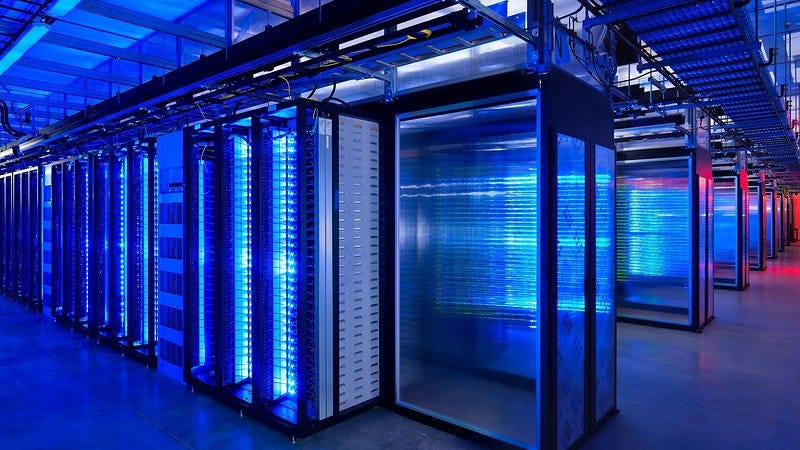
The UaaS Model for Energy-Intensive Industries
The UaaS framework, is exemplified by providers like ENGIE Impact, which allow companies to outsource the design, construction, and operation of energy infrastructure while retaining guaranteed power supply agreements.[i] For data centers requiring 50–100+ megawatts (MW) of continuous load, this model shifts investment costs and technical risks to specialized partners. Recent adaptations are increasingly incorporating SMRs as a core component, with energy service providers like TerraPower[ii] and Last Energy[iii] offering modular reactor solutions under long-term power purchase agreements (PPAs).
A key advantage lies in aligning nuclear energy’s operational profile with data center needs:
Baseload reliability: Nuclear plants operate at >90% capacity factors, matching the 24/7 demand of AI workloads.[iv]
Carbon compliance: Nuclear energy’s zero-emission generation helps tech firms meet decarbonization targets amid tightening regulations.
Grid independence: Co-located SMRs or direct connections to existing reactors bypass congested transmission networks, reducing interconnection delays from four years to months.[v]
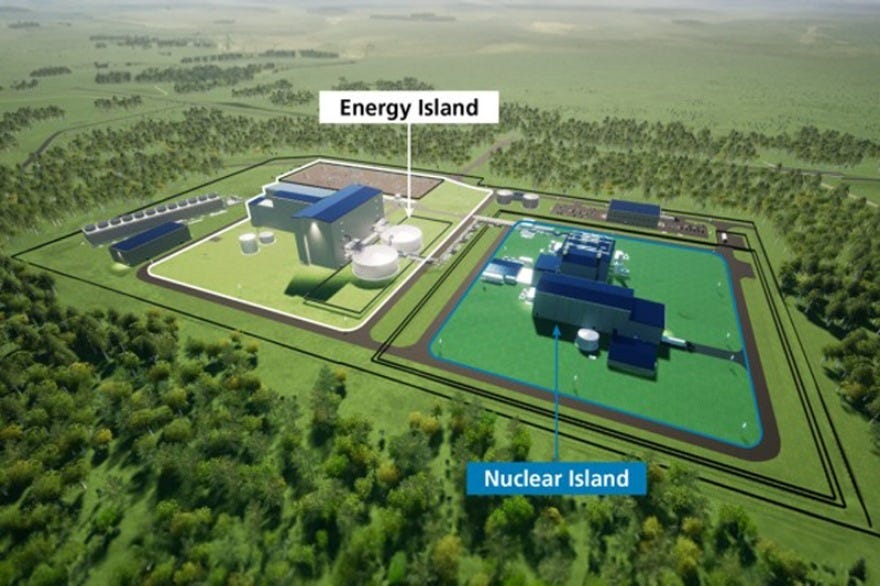
Nuclear Energy’s Strategic Role in Onsite Power Architectures
Co-Locating with Existing Nuclear Plants
Utilities such as PSEG Nuclear and Dominion Energy are pioneering behind-the-meter nuclear partnerships, enabling data centers to secure reliable, high-capacity power while avoiding costly grid upgrades. Amazon Web Services (AWS), for example, has secured a 960 MW power purchase agreement (PPA) with Talen Energy’s Susquehanna nuclear plant, sidestepping an estimated $200 million in transmission infrastructure expenses.[vi] Similarly, Microsoft is leveraging Constellation Energy’s plan to restart Three Mile Island Unit 1 by 2028, ensuring a steady energy supply for its mid-Atlantic data centers under a 20-year PPA.[vii] These arrangements not only accelerate deployment timelines but also enhance cost efficiency. A 2024 study by Michael Kormos finds that co-location strategies can improve grid efficiency by generating power close to the grid. The study also notes these strategies shift interconnection infrastructure costs directly to data center operators, reducing financial burdens on ratepayers[viii].
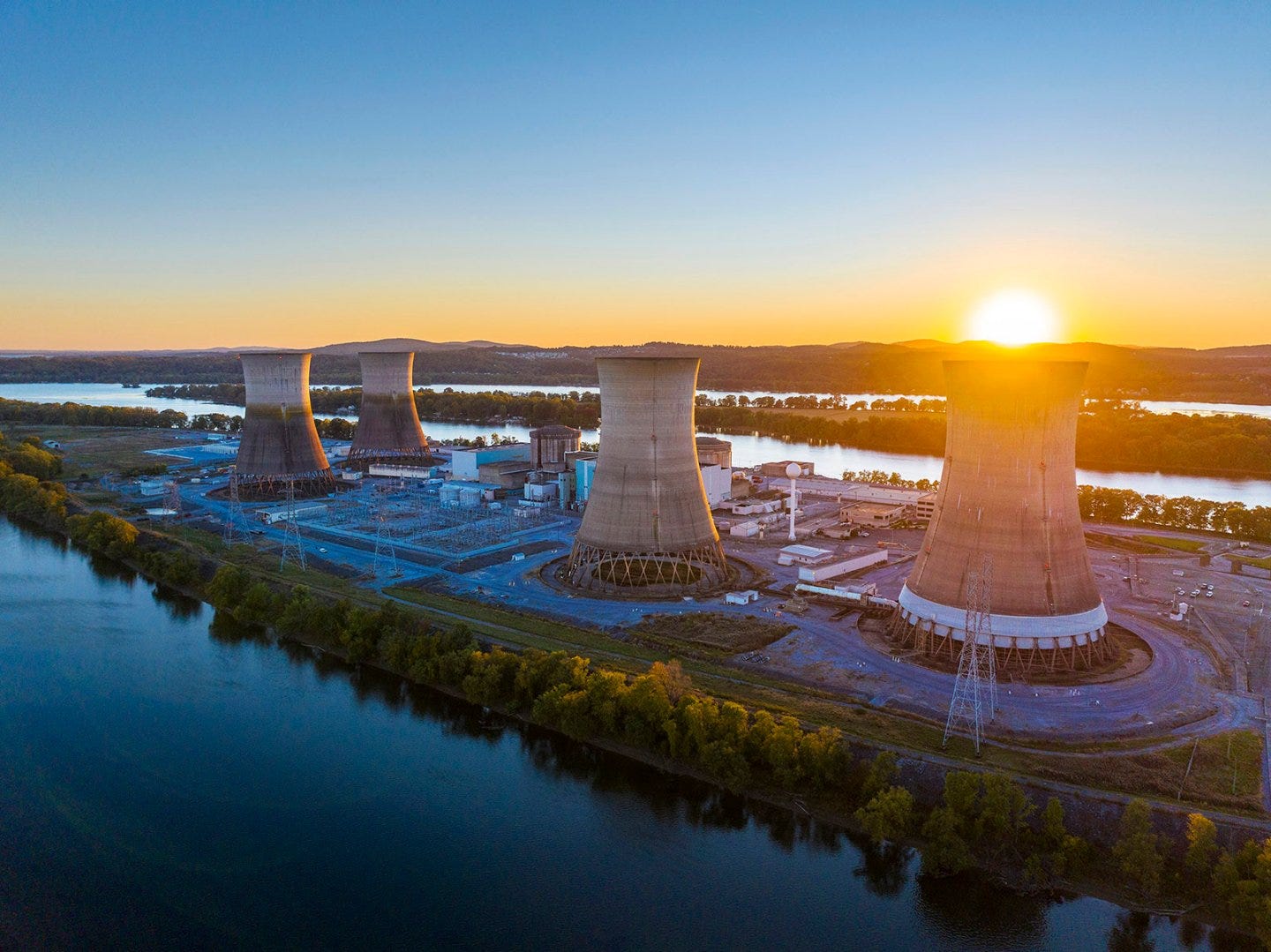
Small Modular Reactors (SMRs)and Advanced Nuclear Technologies
The rise of SMRs is further reshaping the UaaS landscape, offering AI and technology companies access to scalable and flexible nuclear power solutions. Developers such as TerraPower and NuScale are integrating advanced reactor designs into energy service models, enhancing both efficiency and deployment speed. TerraPower’s Natrium reactor, currently in development in Kemmerer, Wyoming, pairs a 345 MWe sodium-cooled fast reactor with molten salt storage, allowing for 150% load flexibility—an essential feature for balancing variable renewable generation.[ix] Meanwhile, NuScale’s NRC-approved VOYGR SMRs will supply Standard Power’s planned 2 GW data center campuses in Ohio and Pennsylvania, with full commissioning targeted for 2029.[x]
New innovations in licensing and reactor design are streamlining rapid diffusion. TerraPower’s licensing parallelization strategy enables non-nuclear site construction, such as energy islands, to proceed during regulatory reviews, reducing project timelines by up to two years.[xi] Representing the “next generation of nuclear technologies,” X-energy’s high-temperature gas reactors (HTGRs) introduce fuel diversification capabilities, supporting hydrogen cogeneration for backup power—an increasingly valuable feature for data centers requiring both uninterrupted electricity and thermal energy solutions.[xii]
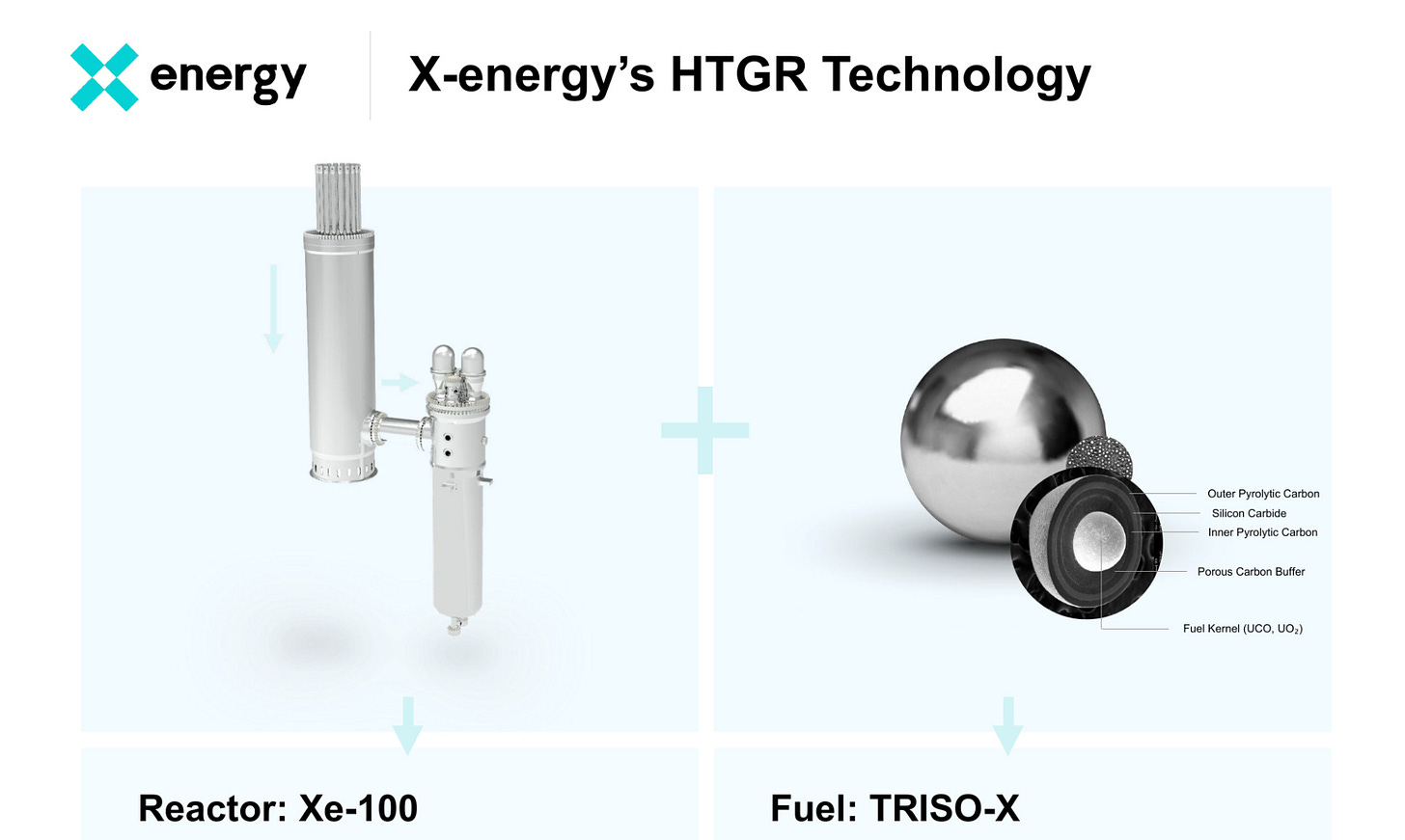
Policy Frameworks for Nuclear-Powered Data Centers
Recent legislative actions underscore the growing recognition of nuclear energy as a key enabler for powering data centers. In Connecticut, SB 299 mandates comprehensive grid impact studies for large data centers while encouraging regulatory agencies to streamline permits for nuclear co-location.[xiii] Likewise, Arizona’s major utilities are collaborating on a Department of Energy grant initiative to explore installing SMRs at former coal plant sites, aiming for operation by 2040.This collaboration demonstrates Arizona’s commitment to expanding its nuclear power capacity while repurposing retired coal plant infrastructure.[xiv]
Yet, challenges remain. Interconnection disputes have arisen—with PJM utilities like Exelon and AEP contesting agreements such as Talen Energy’s deal with AWS on the grounds that they may violate FERC’s cost-allocation principles.[xv] Additionally, potential fuel supply issues loom; shortages of High-Assay Low-Enriched Uranium (HALEU) could delay SMR projects until production ramps up at facilities like Centrus Energy’s Ohio plant post-2025.[xvi]
To offset the high upfront costs associated with nuclear installations—ranging from $6,000 to $8,000 per kWe—innovative financial structures are emerging. For example, tiered power purchase agreements (PPAs) offer flexibility. In the United States, federal agencies like the DOE and Department of Defense (DOD) are considering power purchases to support the emergence of new technologies such as advanced reactors.[xvii] Similarly, UaaS leases, such as those underpinning Last Energy’s PWR-20 reactors under 20-year build-own-operate contracts, tie pricing to uptime service-level agreements, thereby sharing financial risks more equitably between providers and data center operators.[xviii]

Case Studies: Operational and Emerging Projects
Practical applications of these frameworks are already taking shape. Dominion Energy’s Virginia Nuclear Hub, for instance, integrates its 2.6 GW Surry Nuclear Plant with the Surry Green Energy Center to power 30 data centers through a combination of SMRs and hydrogen electrolyzers. This setup not only supplies reliable power but also leverages waste heat recovery to improve overall power usage efficiency by 15%. [xix]
In 2019, Turkey Point Units 3 and 4 received subsequent license renewals, extending their operational lifetimes up to 80 years, through 2053.[xx] This milestone reflects a forward-thinking regulatory environment that not only secures long-term energy stability but also fosters innovative financial models, paving the way for the seamless integration of nuclear power into the digital infrastructures of the future.
As these examples show, the evolving policy landscape and the accompanying financial innovations are critical to unlocking the full potential of nuclear-powered data centers, aligning energy reliability with the rapid scaling needs of today’s AI and cloud computing infrastructures.
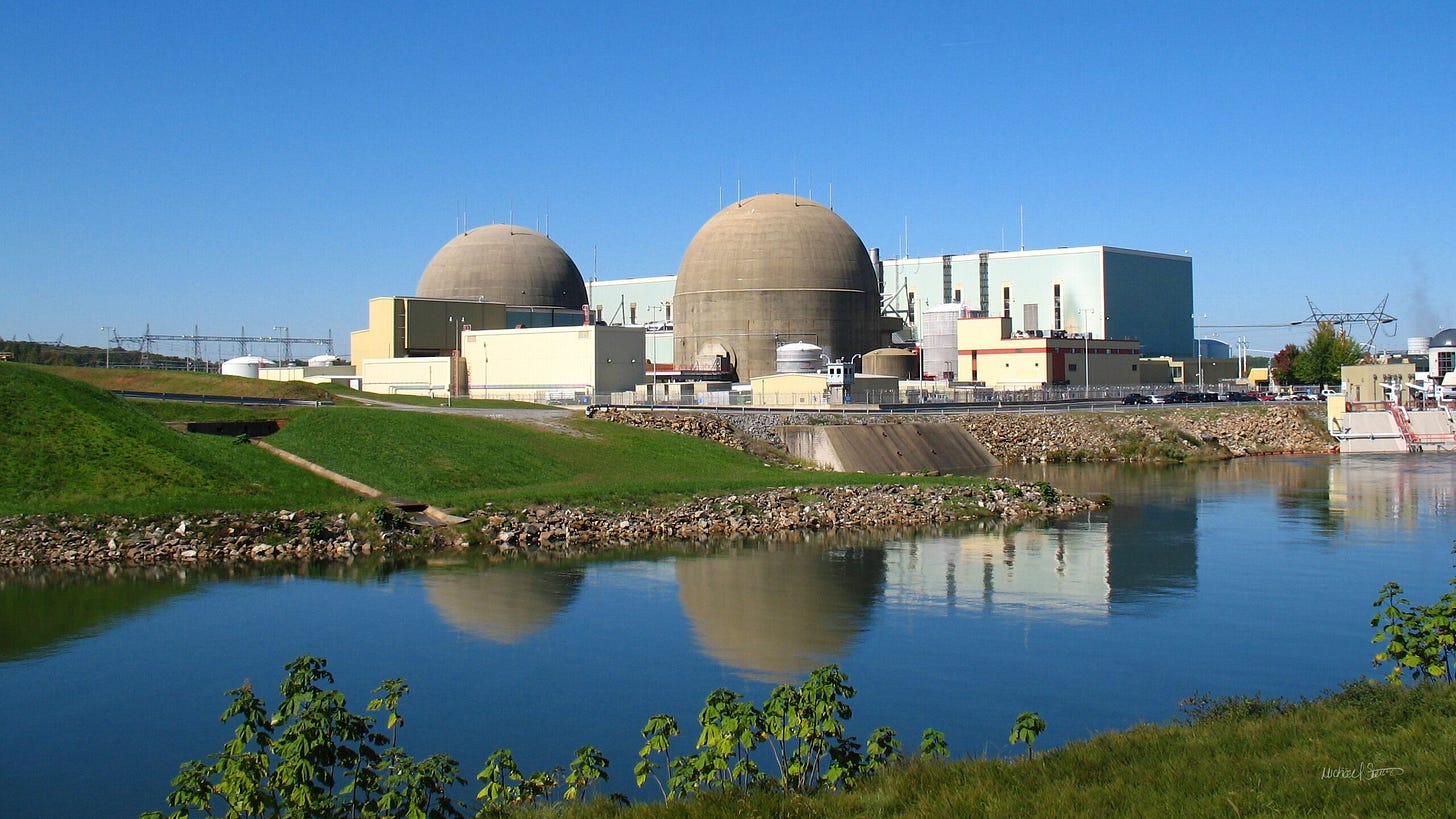
Future Outlook and Challenges
Looking ahead, the “Nuclear-Digital Nexus” is set to redefine advanced reactor deployment by leveraging two key enablers: supply chain maturation and AI-driven optimization. The DOE’s Advanced Reactor Demonstration Program grants, for instance, seek to reduce SMR construction timelines to just 36 months by 2030, a breakthrough that could accelerate deployment and reduce capital risks.[xxi] In parallel, the integration of machine learning technologies that optimize reactor load-following and predictive maintenance promises to boost operational efficiency and reliability, ensuring that nuclear systems remain agile in an increasingly dynamic energy landscape.[xxii]
However, nuclear energy must demonstrate its value while navigating competition from other alternative technologies making leaps and bounds in development and diffusion. Despite offering unmatched power density—exceeding 200 W/ft²—nuclear developers face challenges from rapidly declining battery costs; Tesla’s Megapack pricing has decreased, reaching approximately $332/kWh in 2024, while recent DOE estimates for nuclear energy’s levelized cost of electricity range at $110/MWh,[xxiii] with some analyses suggesting it could be as low as $40/MWh for plants in long-term operation.[xxiv]
A 2024 analysis suggests that even after adjusting for more realistic assumptions, the cost estimate for nuclear falls within the range of renewables.[xxv] In addition, innovative hybrid strategies—such as Holtec’s design for a Combined Nuclear-Solar Power (CNSP) plant that integrates their SMR-300 with a hybrid solar plant— aim to provide baseload or on-demand power while addressing the intermittency issues of solar energy.[xxvi] Together, these trends underscore the need for a dynamic, multifaceted strategy to secure nuclear energy’s role in powering the next generation of data centers.
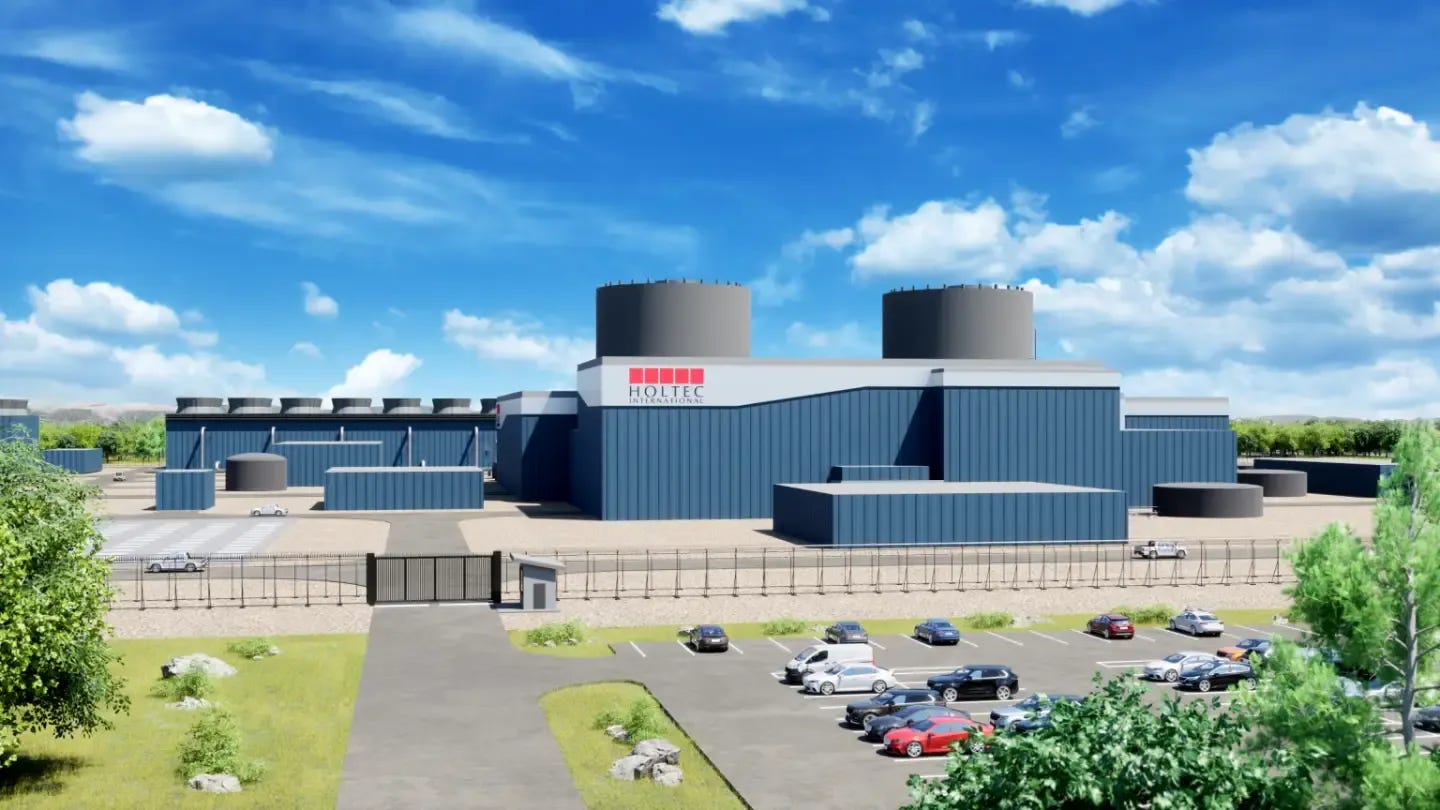
Conclusion: A New Paradigm for Industrial Energy
As the digital revolution accelerates, the convergence of UaaS with onsite nuclear energy is emerging as a game changer for powering high-density computing infrastructures. By integrating advanced reactor technologies—ranging from SMRs to next-generation reactor designs—with innovative financing models and streamlined regulatory pathways, the industry is charting a course toward unprecedented energy reliability and carbon-free operations.
The strategic partnerships between tech giants and nuclear utilities, coupled with evolving policy frameworks and hybrid energy solutions, underscore a fundamental shift in how data centers meet their escalating power demands. Whether through co-location with existing nuclear plants or the rapid deployment of SMRs, these initiatives are not only reducing capital risks and construction timelines but are also setting new benchmarks for grid independence and sustainability.
While challenges such as fuel supply constraints and competitive pressures from alternative technologies persist, the dynamic blend of AI-driven optimization, advanced reactor design, and flexible PPAs positions nuclear energy to play a pivotal role in the future of data center power. As companies continue to invest in onsite nuclear generation, the digital infrastructure will be powered by solutions that are as reliable and scalable as they are sustainable.
By embracing a UaaS energy paradigm, the tech and energy sectors are not only overcoming current barriers—they are laying the foundation for a resilient, carbon-neutral future that meets the rapid scaling needs of tomorrow’s AI and cloud computing landscapes.
I put a lot of effort into integrating high-quality research into my writing. All source materials are linked below. If you found the newsletter insightful or the resources useful—please like, comment, and subscribe!
References:
[i] Rudra, K. (2023, June 28). On-site Utility as a Service for industrial energy needs. ENGIE Impact. Link.
[ii] TerraPower. (2025, January 14). TerraPower awarded pivotal State permit for Natrium® Plant. Link.
[iii]Chabinsky, H. (2023, November). On-site nuclear power: SMRs create new opportunities for colocation data centers. Last Energy. Link.
[iv]Morey, M. (2024, October 1). Data center owners turn to nuclear as potential electricity source. U.S. Energy Information Administration. Link.
[v] Clark, K. (2024, July 17). New study favors co-locating data centers with nuclear plants. Power Engineering. Link.
[vi] Swinhoe, D. (2024, May 30). AWS granted 1,600-acre rezoning request, plans 15-building campus at Pennsylvania nuclear site. Link.
[viii] Kormos, M. (2024, July). The co-located load solution Link.
[ix] TerraPower. (n.d.). The Natrium® Reactor and Energy Storage System. Link.
[x] NuScale Power Corporation. (2023, October 6). Standard Power chooses NuScale’s approved SMR technology and ENTRA1 energy to energize data centers. Link.
[xi] TerraPower, LLC. (2024, March 28). Submittal of the Construction Permit Application for the Natrium Reactor Plant, Kemmerer Power Station Unit 1 Letter to U.S. Nuclear Regulatory Commission. Link.
[xii] X-energy. (2024). X-energy HTGRs. Link.
[xiii] American Public Power Association. (2024, May 22). Utilities eye nuclear power to meet data center power demand. Link.
[xiv] Wolfe, S. (2025, February 5). Arizona utilities team up for new nuclear deployment, including at retired coal plants. Power Engineering. Link.
[xv] Clark, K. (2024, June 27). Exelon and AEP protest interconnection agreement for Amazon data center at Susquehanna nuclear plant. Power Engineering. Link.
[xvi] Kline, K. Stephens, S., & Zitelman, K. (2023, November). Nuclear generation in long-term utility resource planning: A review of integrated resource plans and considerations for state utility regulators. National Association of Regulatory Utility Commissioners. Link.
[xvii] Kirshenberg, S., & Oakley, B. (2023, June 27). ECA Power Purchase Agreeements: Federal agency solutions. Energy Communities Alliance. Link.
[xviii] Patel, S. (2023, March 23). Last Energy secures PPAs for 34 SMR nuclear power plants in Poland and the UK. POWER Magazine. Link.
[xix] Vincent, M. (2023, August 23). Onsite energy plans for new data center projects reflect industry's decarbonization investment. Data Center Frontier. Link.
[xx] Patel, S. (2022, February 1). New era for NextEra: A utility spotlight. Power Magazine. Link.
[xxi] Office of Nuclear Energy. (2020, December 16). Energy Department’s Advanced Reactor Demonstration Program awards $30 million in initial funding for risk reduction projects. Link.
[xxii] Argonne National Laboratory. (2023, November 2). Advances in machine learning for nuclear power operations spell a brighter future for carbon-free energy. Link.
[xxiii] Plummer, D. (2025, February 12). Power play: The economics of nuclear vs. renewables. Forbes. Link.
[xxiv] Dalton, D. (2020, December 9). Nuclear is ‘most affordable dispatchable source of low-carbon electricity’. Nucnet. Link.
[xxv] Hilton, Z. (2024, July 12). Nuclear vs. renewables – which is cheaper? The Centre for Independent Studies. Link.
[xxvi]Holtec International. (2024, January 31). Holtec announces a novel combined nuclear/solar power plant design to stem the rise of carbon in the environment. Link.




